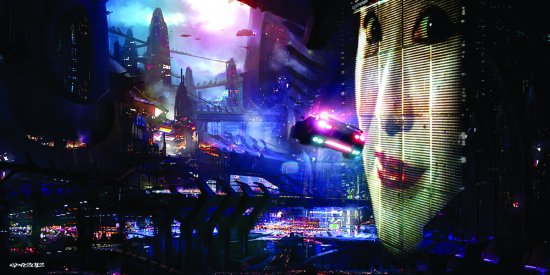
WHAT IS THE ROLE OF AN INTRANET IN THE AGE OF AI?
As AI reshapes the digital workplace, Andy Peacock, employee experience lead at WM Reply, explores how organisations can balance innovation with structure.
For most organisations, digital transformation has evolved rapidly. As businesses host more content and tools digitally, the way employees interact with technology and each other must also evolve. The large quantity of content spread across our digital platforms shapes the employee experience. However, employees often find it overwhelming to locate and access the specific information and applications they need for their jobs.
The challenge facing employees today is not just managing and finding information but navigating the vast network of disparate platforms, apps, and resources required for daily tasks. An effective intranet serves as a centre for modern work, simplifying these interactions with well-structured content, integrated apps and providing a solid foundation for clear channels of communication.
While search functionality, user experience, and mobile accessibility have improved on intranets, employees have largely relied on familiar ways of engaging with company resources and comms. In fact, employee behaviour to find and access information through the M365 intranet, has barely changed in over a decade. Successful communication within organisations has always relied on the ability to reach employees effectively, whether through corporate announcements on SharePoint and Viva Engage (previously Yammer) , or internal messaging though email and Teams.
Contradictory to this, the technology and mechanics in M365 which make up the intranet, have changed quite considerably. Notable product milestones include the move to Cloud-based SharePoint Online in 2013, the ability to create an out-of-the-box intranet in 2016, and the launch of Teams in 2017, for enhanced real-time collaboration with colleagues. In 2021, Microsoft introduced the Viva Suite, bringing a new dimension to the employee experience apps in M365, especially with Viva Connections, reducing the number of places employees go to get their content but putting it directly into Teams.
However, AI is now poised to upend this status quo, of how our employees behave, changing not only how they access information and comms, but also how they behave and act in response to it.
With tools like SharePoint Agents, employees no longer need to sift through pages of content on the intranet, or login to another platform to book holiday. Instead, AI can pull policies directly from libraries, integrate external data sources within a single chat, and even assist with IT support requests. The creation of content has also become more intuitive, with AI-powered assistance ensuring that corporate communications remain engaging and structured without requiring extensive manual effort.
But does this mean AI has the potential to replace the intranet entirely? And will it? A well-organized intranet remains essential—not only for employees navigating key content, but as the foundation that enables AI to surface relevant information effectively. While AI is becoming more ingrained in everyday work, trust must still be built. Employees accustomed to traditional methods may be hesitant to rely on AI completely, much as early internet users once clung to physical encyclopaedias before embracing search engines.
Organisations that structure content strategically, customising AI agents to align with internal frameworks, will unlock the greatest benefits from these advancements. Raising awareness about how AI-driven solutions can remove barriers and automate routine tasks will help employees focus on creative, high-value work—the very work that defines their human ingenuity. From an organisation’s perspective, there’s also the potential for improved engagement with SharePoint (and company communications) from increased traffic through SharePoint Agents and the simplicity of integration that’s offered.
As technology evolves, I don’t believe AI will replace the need for structured content—however, it will enhance it. A well-structured intranet remains as critical as ever for a modern workplace, but it should ultimately ensure that employees are empowered by AI rather than overwhelmed by information. The workplace is changing, but with thoughtful design and intelligent systems, organisations can create a work environment where employees spend less time searching and more time innovating.



